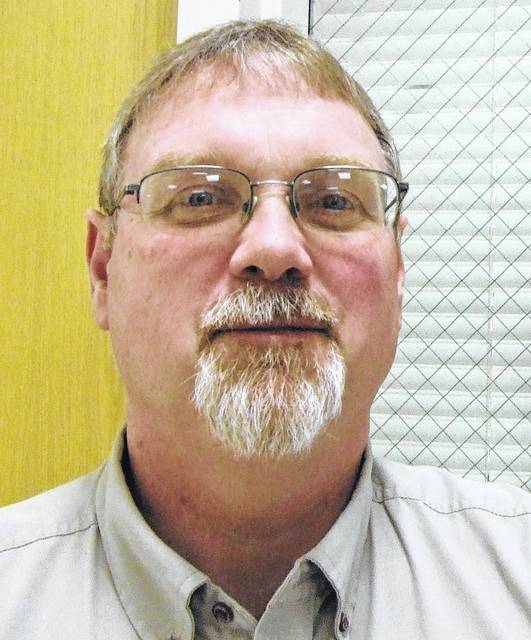
Oh Great Pumpkin, I hope you visit my pumpkin patch tonight bringing sustained sunshine, dry weather, continued harvest progress, less COVID and Peace on Earth!
Happy Halloween folks! This past week of dreary days has been quite fitting to go along with our current Halloween celebration.
I am hopeful many grain producers will be complete with the 2020 grain harvest in the next couple of weeks so they can participate in this year’s Agricultural Policy and Outlook Conference on Nov. 9-13.
The conference will be a series of two-hour online webinars Nov. 9, 10, 12 and 13 hosted by the Department of Agricultural, Environmental and Development Economics in CFAES.
Each day will focus on a different topic. Nov. 9 will be on agriculture finance; Nov. 10, agricultural and environmental policy; Nov. 12, agricultural trade and the health of the U.S. economy; and Nov. 13, grain, livestock and consumer demand projections.
Agricultural economists from CFAES will speak along with other experts from Washington D.C., other leading land grant institutions, and the Federal Reserve System. The webinars begin at noon and include a daily panel discussion that starts at 1 p.m.
For this week, I want to highlight the events of the first two days of this conference.
Day one of the 2020 Agricultural Policy and Outlook Conference covers the cumulative result of all other session topics: impacts of trade, policy, and markets on farm financial health.
The financial health and outlook of farm businesses manifests to agribusinesses through sales as well as the financial strength of the farmland markets and the agricultural lending sector.
After a peak in 2012 for U.S. net cash farm income and a decline through 2016, the 2020 net cash farm income is expected to improve for the fourth consecutive year amidst relatively stable crop and animal cash receipts and increasing debt to asset and debt to equity ratios. At the backdrop, nearly $40 billion in direct government assistance are forecasted for 2020.
Ani Katchova, Associate Professor and Farm Income Enhancement Chair in the Department of Agricultural, Environmental, and Development Economics (AEDE), will kick off the 2020 conference with an outlook on farm income as the calendar turns to 2021. Joining her is Todd Kuethe, Associate Professor and Schrader Endowed Chair in Farmland Economics at Purdue University and Cortney Cowley, Economist at the Federal Reserve Bank of Kansas City.
Agricultural land represents roughly 83% of farm sector assets and is a critical component of a producer’s net worth and ability to secure loans. Supply and demand of land, cash receipts, and interest rates are a few of the items influencing land values that will be covered through session presentations.
Day two of the 2020 Agricultural Policy and Outlook Conference evaluates the state of U.S. policy as it relates to agriculture and the environment one week following the Nov. 3 U.S. election. Campaigns in 2020 have offered platforms and plans covering taxes, healthcare, biofuels, climate change, immigration, and other important topics, but what do these plans mean for agriculture and the environment?
Experts from The Ohio State University and other land-grant universities will cover three important topics for agricultural producers and consumers: institutional carbon markets, access to a stable and healthy labor force, and the future of biofuels.
Brent Sohngen, Professor of Environmental and Resource Economics in AEDE, will examine the rush of companies to announce carbon emission reductions and even carbon neutrality goals, including the likes of food sector giants like Cargill, ADM, Nestle, Coca-Cola and McDonalds.
Even energy companies long associated with fossil fuels consumption, like American Electric Power and BP, are getting into the act and driving the economy towards carbon neutrality.
Given that the agricultural sector has one of the world’s largest carbon footprints, it is useful to ask why are these companies joining the battle against climate change, and how far up the supply chain will their ambitious goals reach?
Margaret Jodlowski, Assistant Professor in AEDE and new to OSU, will discuss the enduring impact of COVID-19 travel restrictions and border closures, as well as the continued immigration policy uncertainty, on farms’ access to a stable and healthy labor force.
COVID-19 caused significant disruption to the non-farm economy; the loss of off-farm jobs or a reduction in opportunities to earn income off-farm can have significant impacts on finances for both the farm business and the farm household.
Joining the program from the University of California at Davis is Aaron Smith, Deloach Professor of Agricultural Economics, to cover the outlook of the U.S. biofuels sector. Great attention has been placed on biofuels including ethanol and biodiesel during 2020.
Renewable Volume Obligations setting refiner blending compliance will closely be watched in the coming weeks as the Short-Term Energy Outlook for gasoline demand remains volatile, along with a reset of Congressionally set targets for biofuel by the Environmental Protection Agency potentially coming in the near future.
Planners for the even suggest that if you are in the agricultural industry in any capacity this is a must attend event as the information provided is invaluable.
The 2020 Agricultural Policy and Outlook Conference will be offered virtually, free of charge. Information about all sessions and registration can be found at https://bit.ly/3moeHvs .
Tony Nye is the state coordinator for the Ohio State University Extension Small Farm Program and has been an OSU Extension Educator for agriculture and natural resources for over 30 years, currently serving Clinton County and the Miami Valley EERA.


